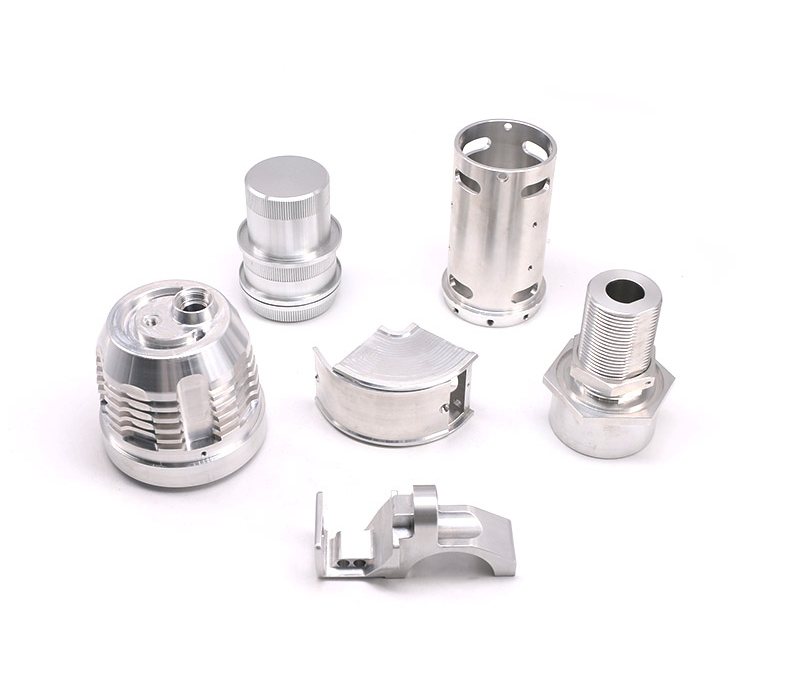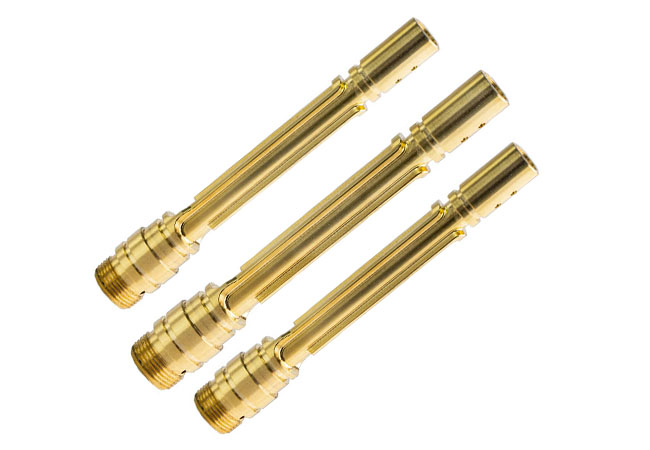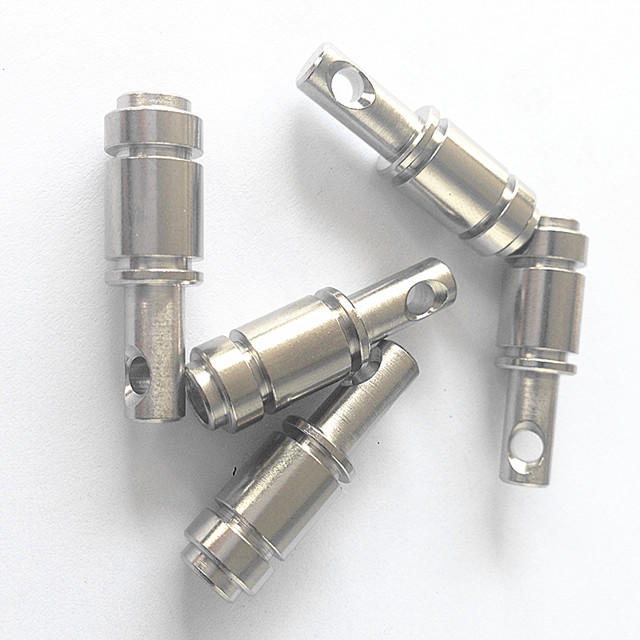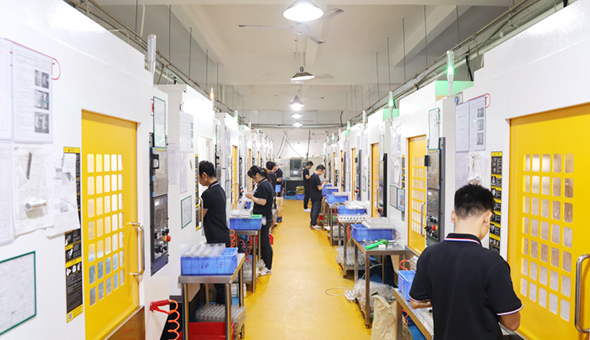What is Alloy? – A Complete Guide
In the field of CNC machining, pure metals often lack the necessary strength, flexibility and durability to meet the requirements of many industrial applications. If not properly improved, these problems may lead to substandard product quality, increased maintenance costs and reduced production efficiency. To overcome these challenges, alloys have become an effective solution.
Alloys are composed of two or more elements, at least one of which is a metal element. By mixing different elements, alloys can significantly enhance the properties of pure metals, improve their strength, corrosion resistance and flexibility, making them the preferred materials in many manufacturing fields. Alloys not only solve common problems faced by pure metals, but also become important game changers in the manufacturing industry. Next, let’s explore the history, types and many benefits of alloys.
The History of Alloys
Alloys have been around since ancient times. The first known use of alloys dates back to the Bronze Age, when civilizations mixed copper and tin to create bronze. This marked a significant shift in tool-making and weaponry, as bronze was more durable than pure copper. Over time, metallurgists discovered other combinations, such as steel, which played a crucial role in the Industrial Revolution.
What Is an Alloy?
An alloy is a substance composed of two or more elements, where at least one is a metal. The result is a material that often has better properties than the individual elements. For example, combining iron with carbon creates steel, which is stronger and more flexible than pure iron. Alloys are typically designed to enhance strength, improve resistance to corrosion, and adjust melting points, making them highly versatile in engineering and industrial applications.
Are Alloys Pure or Impure?
Alloys are impure by nature, as they are combinations of different elements. However, this “impurity” is intentional and beneficial. Pure metals often have weaknesses, like being too soft or prone to corrosion. By adding other elements, metallurgists can enhance the metal’s properties. For example, pure iron is soft, but adding carbon turns it into steel, which is much stronger and harder.
What Are the Different Types of Alloy?
Alloys are classified into two broad categories: ferrous and non-ferrous alloys.
Ferrous Alloys: These contain iron as the primary metal. Steel is the most well-known example, and it’s used extensively in construction, automotive, and manufacturing industries due to its strength and durability.
Non-ferrous Alloys: These contain little to no iron. Examples include aluminum alloys, copper alloys and titanium alloys. Non-ferrous alloys are valued for their resistance to rust, lightweight properties, and conductivity.
The Composition of Alloys
Alloys are formed by the fusion of two or more elements, at least one of which is a metal, and the whole has metallic properties. Specifically:
The main component of the alloy, providing the alloy with basic metallic properties. Common metal elements include iron, copper, aluminum, zinc, nickel, titanium, etc., which can be fused to form alloys of various properties.
In addition to metals, alloys may also contain non-metallic elements such as silicon, carbon, phosphorus, and sulfur. The addition of these non-metallic elements can adjust the physical and chemical properties of the alloy, such as hardness, toughness, corrosion resistance, heat resistance, etc., to meet specific application requirements.
Common Classes of Alloys
1. Aluminum Alloys
Aluminum alloy is mainly composed of aluminum, and alloy elements such as copper, magnesium, zinc, and silicon are added to improve its performance. It has low density, high strength, good corrosion resistance, and good electrical and thermal conductivity. Aluminum alloys are widely used in aerospace, automobile manufacturing, machinery manufacturing, electronics, construction and other fields. For example, in the aerospace field, aluminum alloys are used to manufacture key components such as aircraft fuselages and engine components.
2. Brass
Brass is a mixture of copper and zinc, and different zinc contents affect the performance and color of brass. Brass has good corrosion resistance, processing performance and cutting performance, and has certain electrical conductivity. These characteristics make brass an ideal choice for making products such as water pipes, air conditioner internal and external machine connection pipes, valves, pipe fittings, musical instruments and bathroom hardware.
3. Steel
Steel is an alloy composed of iron and carbon, and other alloy elements can also be added to improve its performance. Steel has the characteristics of high strength, high hardness, good plasticity and easy processing and welding. Therefore, steel has become a pillar material in the fields of construction, automobiles, machinery, ships, bridges, etc. Different types of steel (such as carbon steel, stainless steel, alloy steel, etc.) have different characteristics and applications, meeting the needs of various complex environments.
4. Bronze
Bronze is an ancient alloy of copper and tin, and elements such as lead and zinc can also be added to improve its performance. Bronze has high hardness, good corrosion resistance, and strong plasticity. Bronze is selected as the preferred material for making sculptures, medals, coins, clocks, engine accessories and other products. Especially in marine applications, bronze is favored for its corrosion resistance and is often used to manufacture ship propellers, turbine boxes and other parts.
5. Titanium Alloys
Titanium alloy is mainly composed of titanium, and alloy elements such as aluminum, vanadium, and molybdenum are added to improve its performance. Titanium alloy has the characteristics of high strength, low density, good corrosion resistance and excellent high temperature resistance. Titanium alloy has a wide range of applications in aerospace, medical, automotive, sporting goods and other fields. For example, in the field of aerospace, titanium alloy is used to manufacture key components such as aircraft engine blades and fuselage structural parts; in the medical field, titanium alloy is used to make medical devices such as artificial joints and dental implants.
6. Nickel Alloys
These alloys are highly resistant to heat and corrosion. Nickel alloys are used in high-temperature environments such as gas turbines and chemical plants.Nickel alloys are mainly composed of nickel elements, and elements such as chromium, molybdenum, and copper are added to improve their performance. Nickel alloys have the characteristics of heat resistance, corrosion resistance, and excellent high-temperature strength. Nickel alloys are widely used in high-temperature and highly corrosive environments such as gas turbines and chemical plants. For example, in gas turbines, nickel alloys are used to manufacture key components such as blades and turbines; in chemical plants, nickel alloys are used to make chemical equipment, heat exchangers and other components.
7. Copper-Nickel Alloys
Copper-nickel alloys are mainly composed of copper and nickel, and elements such as aluminum can be added to improve their performance. Copper-nickel alloys have the characteristics of excellent corrosion resistance, strength, hardness, and electrical resistance. These characteristics make copper-nickel alloys widely used in shipbuilding, petroleum, chemical industry, construction, electricity, precision instruments, medical equipment, musical instrument manufacturing and other fields. Especially in marine applications, copper-nickel alloys are ideal for ship components and desalination plant equipment due to their excellent seawater corrosion resistance.
Characteristics of Alloys
The Appearance of Alloys: Color and Look
The appearance of an alloy depends on its composition. For example, brass has a bright gold color, while bronze has a darker, reddish hue. The surface finish can also vary, ranging from shiny to matte, depending on how the alloy is processed.
Physical Properties of Alloys
| Alloy Type | Density (g/cm³) | Melting Point (℃) | Electrical Conductivity (%IACS) | Thermal Conductivity (W/(m·K)) | Other Physical Properties |
| Aluminum Alloy | ~2.7 | 660 | Depends on alloy composition | Depends on alloy composition | High plasticity, easy to process |
| Brass | ~8.4-8.7 | Depends on zinc content (e.g., H62 brass has a melting point of ~934℃) | Lower | Higher | Good processing properties |
| Steel | ~7.8 | Depends on carbon content (typically 1400-1500℃) | Lower | Higher | High strength, high hardness |
| Bronze | ~8.4-8.9 | 800℃ (25% tin content) | Lower | Higher | High hardness, wear-resistant |
| Titanium Alloy | ~4.5 | Depends on alloy composition (e.g., Ti-6Al-4V alloy has a melting point of ~1600℃) | Lower | Lower | Low density, high strength |
| Nickel Alloy N6 | 8.9 | 1453 | Higher | Higher | Good thermoelectric properties |
| Cupro-Nickel Alloy B30 | ~8.9 | ~1180 | 15 | It will vary depending on the environment. But generally speaking, the thermal conductivity of B30 copper-nickel alloy is about 40W/(m·K) at 20°C. | Excellent electrical resistance properties |
Chemical Properties of Alloys
| Alloy Type | Main Chemical Elements | Corrosion Resistance | Reaction Characteristics with Other Substances | Other Chemical Properties |
| Aluminum Alloy | Aluminum, copper, magnesium, zinc, silicon | Good (forms an oxide layer in dry environments) | May accelerate corrosion when in contact with stainless steel or in moist environments | Good low-temperature performance |
| Brass | Copper, zinc | Good | Strong chemical corrosion resistance | Brass can also react under extreme conditions such as heat, flames and sparks, releasing heat and possibly producing hazardous decomposition products |
| Steel | Iron, carbon | Depends on type (e.g., stainless steel has excellent corrosion resistance) | Easily oxidizes and rusts | Steel tends to rust in a moist, oxygen-rich environment |
| Bronze | Copper, tin | Good | Chemically stable | Good casting properties |
| Titanium Alloy | Titanium, aluminum, vanadium, molybdenum | Excellent | Reacts with O2, N2, etc., in the atmosphere | High temperature resistance and corrosion resistance far superior to stainless steel |
| Nickel Alloy N6 | Nickel, chromium, molybdenum, etc. | Excellent | Good corrosion resistance and high-temperature performance | Good magnetic properties and weldability |
| Cupro-Nickel Alloy B30 | Copper, nickel | Excellent (especially in seawater) | Corrosion may occur when exposed to chemicals such as strong acids, strong bases or certain oxidizing agents. | Good heat resistance |
Other Benefits of Alloyed Materials in Manufacturing
1. Improve Mechanical Properties
By adding other elements, alloy materials can significantly improve their mechanical properties. Compared with pure metals, alloys generally have higher strength and hardness, which enables them to withstand greater loads and impacts. For example, adding copper, manganese, silicon and other elements to aluminum alloys can significantly improve the tensile strength and hardness of the material, making it more suitable for parts that need to withstand high loads. In addition, alloying can also improve the toughness of the material, making it more resistant to fracture.
2. Enhanced Corrosion Resistance
Another major advantage of alloy materials is the corrosion resistance. By adding specific alloying elements, such as chromium and nickel, the oxidation resistance and chemical corrosion resistance of the material can be significantly improved. The chromium element in stainless steel can form a dense oxide film to protect the material from corrosion. Nickel alloys and titanium alloys perform well in highly corrosive environments and are often used in chemical, marine and other fields to ensure that equipment can still operate stably under harsh conditions.
3. Improve Processing Performance
The processing performance of alloy materials is also one of the reasons for their popularity. Alloys generally have better fluidity, making the casting process smoother and making it easier to fill the mold and form the desired part shape. For example, aluminum alloys exhibit good fluidity during casting, and can mass-produce parts with complex shapes and high precision. In addition, some alloy materials also have better cutting performance and surface quality during cutting, such as high-speed steel and cemented carbide, which are often used to manufacture cutting tools to improve cutting efficiency and tool life.
4. Reduce Costs and Extend Service Life
The use of alloy materials can also reduce costs and extend service life. By optimizing the alloy composition and manufacturing process, the cost of materials can be reduced without sacrificing performance. For example, by adding an appropriate amount of alloying elements, the wear resistance, fatigue resistance and corrosion resistance of the material can be improved, thereby extending the service life of parts.
Industries That Use Alloys
Alloys are widely used in many industries due to their unique physical and chemical properties.
1. Aerospace
Due to the extremely high performance requirements of aerospace vehicles for materials, alloys have become indispensable materials in this field due to their high strength, low density, good high temperature resistance and corrosion resistance. Aluminum alloys, titanium alloys and high-temperature alloys are widely used in aircraft engine components, fuselage structures, rocket thrusters, missiles and satellite components. These alloys not only meet the strict requirements of aerospace vehicles for materials, but also provide reliable performance and long service life.
2. Automobile Industry
Alloys also play an important role in the automotive industry. Special alloys, such as titanium alloys, aluminum alloys and steel alloys, are used to manufacture key components such as engines, brake systems, suspension systems, and body structures. The application of these alloys significantly reduces the weight of automobiles and improves fuel economy and safety. For example, titanium alloy connecting rods can reduce weight, improve response speed and fuel economy compared to traditional steel connecting rods; aluminum alloys are widely used in automobile manufacturing due to their light weight and high strength.
3. Electronics Industry
In the electronics industry, alloys also play an important role. Alloy materials are used to manufacture key components such as connectors and contacts due to their excellent conductivity and corrosion resistance. In addition, with the continuous advancement of science and technology, more new alloy materials are emerging, and their application in electronic products is becoming more and more extensive. For example, precision alloy 1J36 has made remarkable achievements in the field of electromagnetics and is widely used in the manufacture of core components such as transformers, inductors, and mutual inductors, effectively improving the stability and efficiency of the power system.
4. Medical Field
Titanium alloys are widely used in medical devices and implants due to their good biocompatibility and corrosion resistance. For example, orthopedic implants made of titanium alloys have good stability and durability, which can help patients restore joint function. In addition, some special alloys are also used to manufacture surgical instruments and medical equipment, providing strong support for the development of the medical industry.
In Conclusion
Alloys are indispensable materials in all walks of life. By optimizing the performance and durability of basic metals, they play a vital role in many key fields such as aerospace, automotive industry, electronics industry and medical.
VMT is well aware of the importance of alloy materials. We provide professional CNC machining services and can process a variety of alloy materials including aluminum alloys, titanium alloys, stainless steel alloys, high-temperature alloys and precision alloys. We have advanced machining equipment and rich machining experience to ensure that customers’ customized needs are completed with high precision and efficiency. If you need CNC machining services for alloy materials, VMT will be your ideal choice.
Frequently Asked Questions About Alloy
What is an Alloy (IGCSE Definition)?
An alloy is a material made by combining two or more elements, at least one of which is a metal, to enhance the properties of the base metal. For example, adding carbon to iron produces steel, which is stronger than pure iron.
How are Alloys Made?
Alloys are made by melting the base metal and then mixing it with other elements in precise proportions. The mixture is cooled to form a solid material with new properties. The process can vary depending on the type of alloy, with some requiring additional heat treatment or chemical processes.
What are the Properties of Alloy vs Pure Metal?
Alloys generally have superior properties compared to pure metals. For example, alloys can be stronger, more resistant to corrosion, and have higher melting points. Pure metals, on the other hand, are often softer and more reactive. This makes alloys more suitable for industrial applications where durability and performance are crucial.







